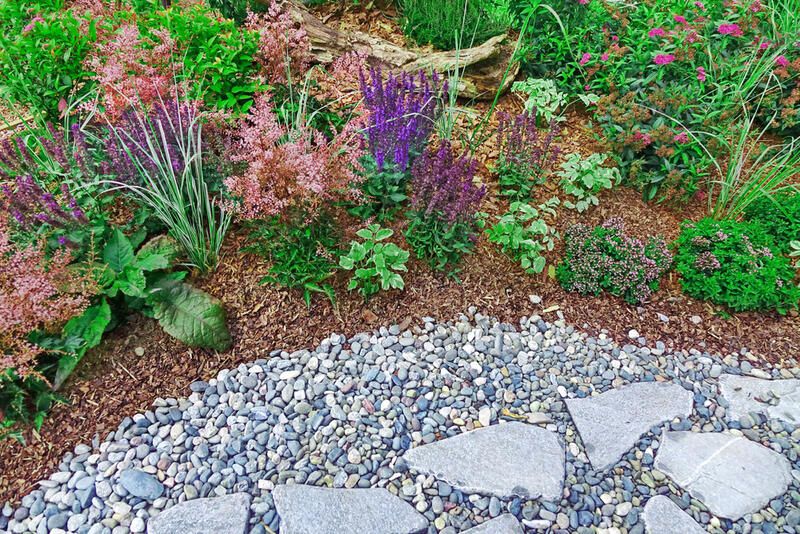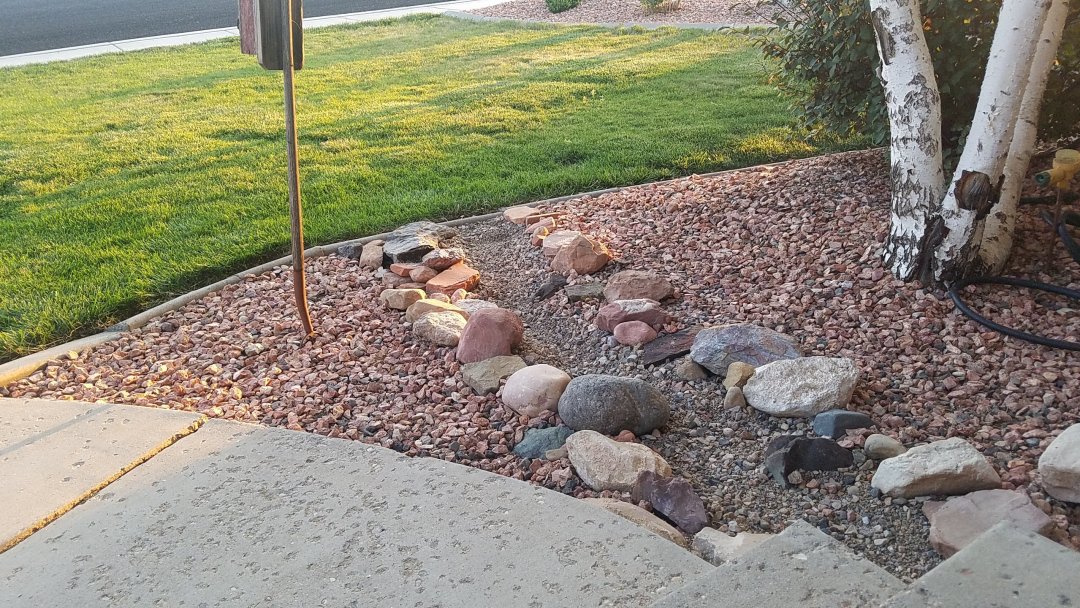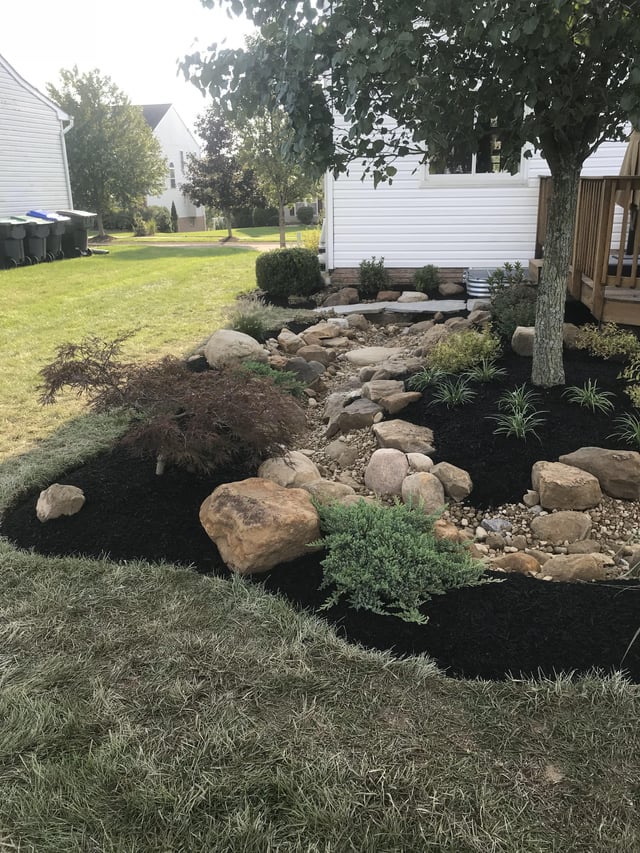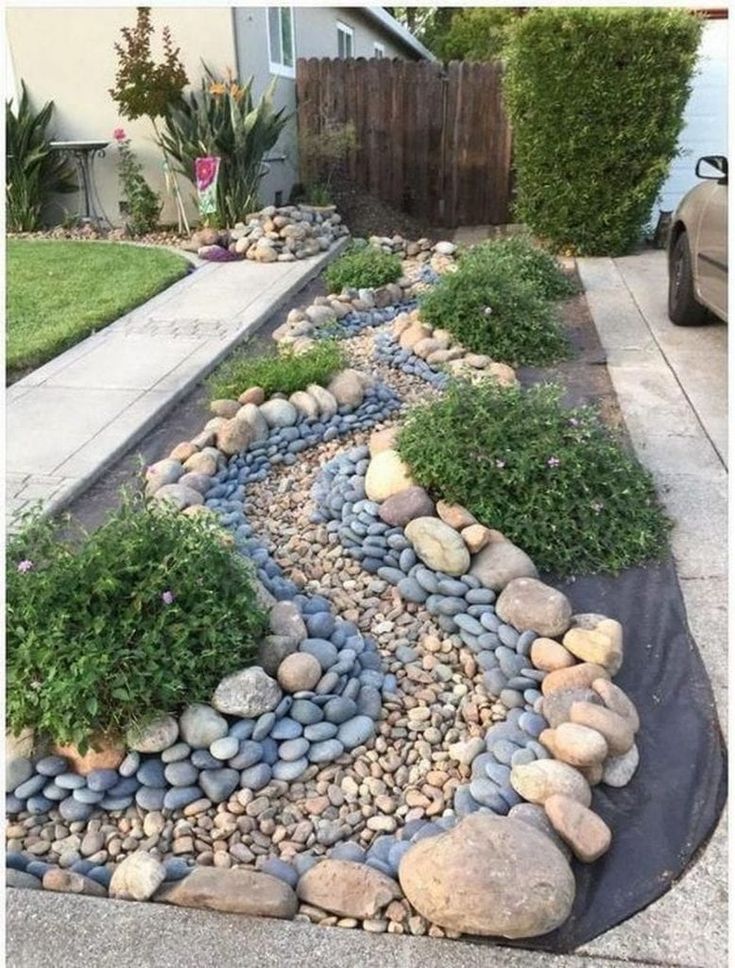Are you tired of the same old traditional landscaping ideas for your yard? Do you want to add a unique and natural touch to your outdoor space? Consider incorporating a dry creek bed into your landscape design. Not only does it add visual interest, but it also serves a functional purpose by directing water flow and preventing erosion. In this article, we will explore some creative and practical dry creek bed landscaping ideas that will elevate your yard to the next level.
1. Types of Dry Creek Beds and How to Build Them

Types of Dry Creek Beds:
- Japanese-style dry stream beds
- Desert-themed dry river beds
- Rustic and natural-looking creek beds
Dry creek beds come in various styles and designs, making them versatile and suitable for any type of landscape. You can opt for a Japanese-style dry stream bed with smooth river rocks and carefully placed boulders, or go for a desert-themed dry river bed with cacti and succulents as your plants of choice. If you prefer a more rustic look, a simple and natural-looking creek bed using native stones and plants may be the perfect fit for your yard.
Building Your Own Dry Creek Bed:
- Determine the location and size of your dry creek bed.
- Mark out the edges of the bed with spray paint or a garden hose.
- Remove the top layer of soil and dig down to create a trench for your creek bed.
- Line the bottom and sides of the trench with landscape fabric to prevent weed growth.
- Add a layer of gravel or small rocks along the bottom of the trench.
- Arrange larger rocks and boulders to create a natural-looking creek bed.
- Fill in the gaps between rocks with smaller stones and pebbles.
- Use a mix of native plants and grasses to add texture and color to your dry creek bed.
- Top off with a layer of mulch to complete the natural look.
- Keep in mind the natural flow of water and create dips and curves to mimic a real stream.
2. Enhancing Your Dry Creek Bed with Plants and Accessories

Plants for Your Dry Creek Bed:
- Native grasses such as switchgrass, fescue, and blue grama
- Perennials like coneflowers, black-eyed Susans, and daylilies
- Succulents and cacti for a desert-themed bed
- River birch trees for added height and shade
Adding plants to your dry creek bed not only adds beauty but also helps with water drainage and prevents erosion. Choose plants that are suitable for your climate and will thrive in the specific conditions of your creek bed. Native grasses are perfect for creating a natural-looking bed, while colorful perennials add a splash of color. If you’re going for a desert-themed bed, succulents and cacti are excellent choices. Adding a couple of river birch trees will also provide some much-needed shade and height to your landscape.
Accessories for Your Dry Creek Bed:
- Garden lights to highlight the bed at night
- Decorative stones and pebbles
- Wooden bridges or stepping stones for added interest
- Bird baths or fountains for a calming water feature
- Benches or seating areas to enjoy the view of your dry creek bed
Incorporating accessories into your dry creek bed can take it from ordinary to extraordinary. Use garden lights to illuminate your bed at night and create a cozy ambiance. Decorative stones and pebbles can add texture and depth to your creek bed. Consider adding wooden bridges or stepping stones for a whimsical touch. A bird bath or fountain can also be a lovely addition, providing a soothing sound of running water. And what’s better than enjoying the view of your beautiful dry creek bed from a comfortable seating area?
3. Using Dry Creek Beds to Solve Common Landscaping Problems

Solving Drainage Issues:
- Create a diversion for excess water flow
- Direct water away from your home’s foundation
- Prevent soil erosion and runoff
If you have areas in your yard that are prone to flooding or standing water, a dry creek bed can help solve these common drainage issues. By creating a diversion for excess water flow, you can prevent damage to your plants and landscape. Directing water away from your home’s foundation can also prevent potential water damage. Additionally, using a dry creek bed can help prevent soil erosion and runoff, keeping your landscape intact.
Covering Up Unsightly Utility Pipes:
- Use rocks and plants to camouflage pipes
- Construct a small bridge over the pipes
Utility pipes and irrigation systems can be an eyesore in your yard. Instead of trying to hide them with shrubs or potted plants, consider incorporating them into your dry creek bed design. Use rocks and plants to cover up the pipes, making them blend seamlessly into the bed. You can also construct a small bridge over the pipes, adding a unique feature to your landscape.
4. Maintenance Tips for Your Dry Creek Bed

Keep it Weed-Free:
- Install landscape fabric or use weed barrier spray
- Regularly pull out any weeds that may sprout
To keep your dry creek bed looking its best, it’s essential to keep it weed-free. Installing landscape fabric or using a weed barrier spray can help prevent pesky weeds from growing. However, some weeds may still find their way through, so be sure to regularly pull them out to keep your bed looking pristine.
Clean Out Debris:
- Remove leaves, twigs, and other debris after heavy rainfalls
- Check for blockages in the drainage paths and clear them out
After heavy rainfall or strong winds, your dry creek bed may collect leaves, twigs, and other debris. Be sure to remove these regularly to prevent clogging and ensure proper water flow. Additionally, check for any blockages in the drainage paths, such as stones or branches, and clear them out to keep your bed functioning correctly.
Prune and Maintain Plants:
- Regularly trim and prune plants to maintain their shape and size
- Remove dead or damaged plants promptly
Just like any other landscape feature, the plants in your dry creek bed will require maintenance. Regularly trimming and pruning them will help maintain their shape and size. Be sure to also remove any dead or damaged plants promptly to prevent disease and maintain the overall appearance of your bed.
FAQs About Dry Creek Bed Landscaping

What is the purpose of a dry creek bed?
A dry creek bed serves both a functional and aesthetic purpose. It helps with water drainage, prevents erosion, and adds visual interest to your yard.
Can I build a dry creek bed on my own?
Yes, you can! Building a dry creek bed is a project that can be done by most homeowners. However, if you are unsure or would like a professional’s opinion, it’s always best to consult a landscaping expert.
How much does it cost to install a dry creek bed?
The cost of installing a dry creek bed varies depending on the size, materials used, and labor costs. On average, it can range from $500 to $2,000.
Do I need to worry about maintenance?
Like any other landscape feature, a dry creek bed will require some maintenance to keep it looking its best. However, compared to other landscaping elements, it requires minimal upkeep.
Can a dry creek bed work in any type of yard?
Yes, dry creek beds are versatile and can work in any type of yard, whether it’s hilly, flat, or sloped. Just ensure proper planning and placement for optimal functionality.
Conclusion: Bringing Nature into Your Yard with a Dry Creek Bed
Incorporating a dry creek bed into your landscape design not only adds a unique and natural touch but also serves a practical purpose. With various styles, plants, and accessories to choose from, you can create a creek bed that fits your yard’s aesthetic and functional needs. By using these landscaping ideas and tips, you can transform your outdoor space into a tranquil oasis, bringing nature right into your own backyard.
